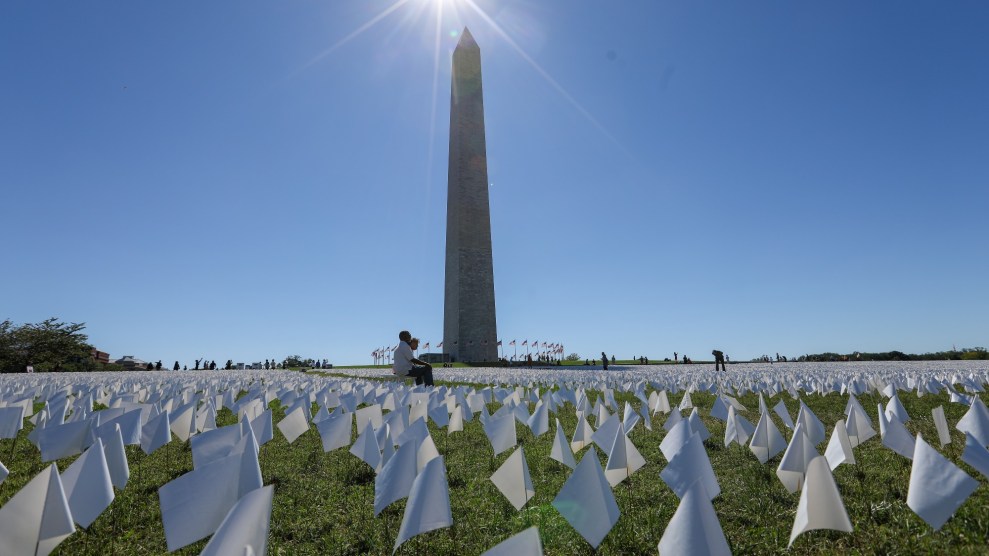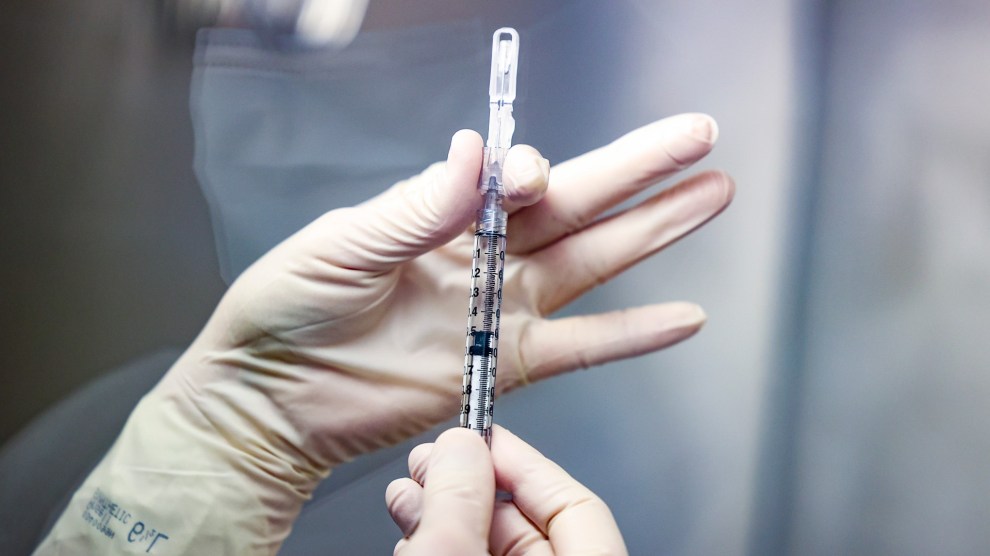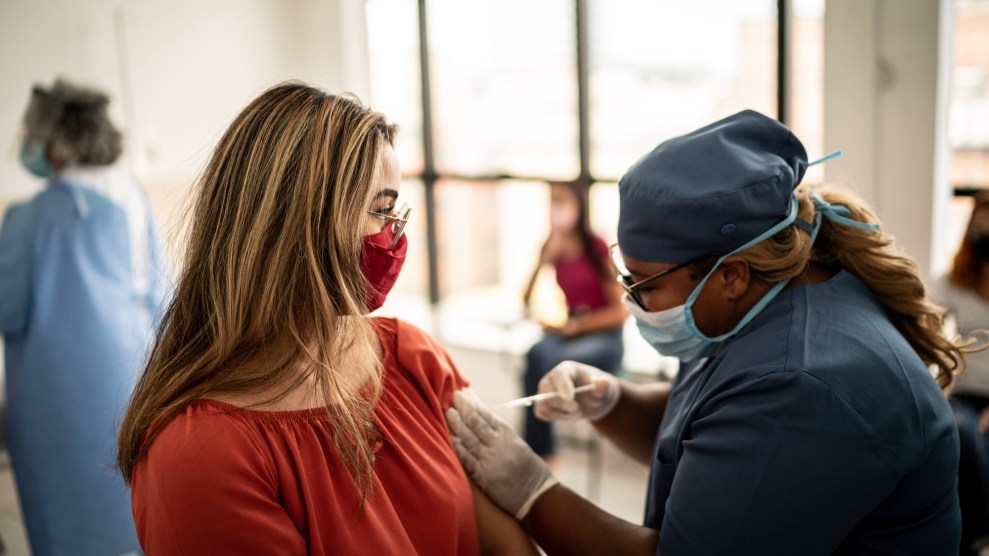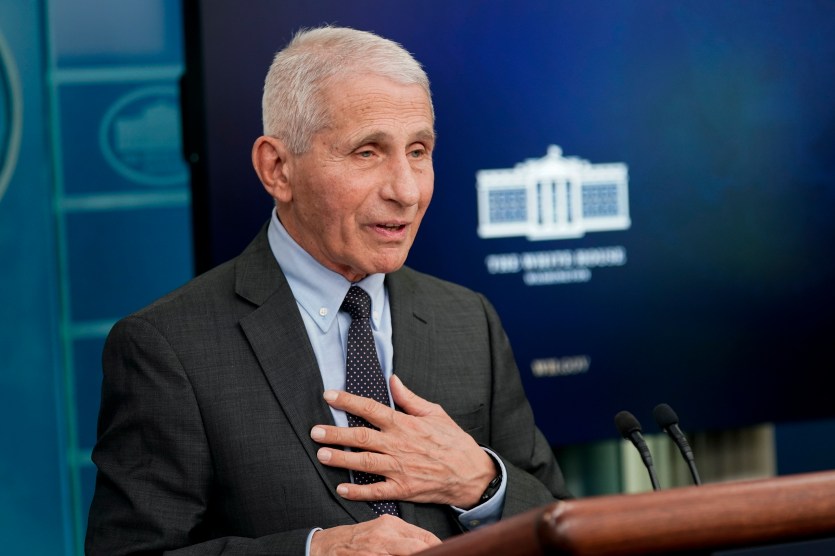
An art installation no the National Mall commemorating all Americans who have died of COVID-19 on September 24, 2021. Yasin Ozturk/Anadolu Agency/Getty
When the United States hit 100,000 COVID-19 deaths in May of 2020, it was a pretty big deal. The New York Times mourned the “incalculable loss” in a full page headline. Even Donald Trump grudgingly acknowledged the toll.
On Sunday, with far less fanfare, the US hit 800,000 COVID deaths, according to a Reuters tally. That appalling milestone comes with deaths and cases again rising amid cold weather and continued vaccine refusal, and with the highly transmissible Omicron variant poised to contribute to the surge.
Eight hundred thousand is roughly the same as the number of Rwandans estimated to have been killed in the 1994 genocide there. It’s more than the population of North Dakota. Worldwide, meanwhile, COVID has killed at least 5.3 million people, according to a New York Times estimate. The real number is probably much higher.
Official COVID deaths, those that hospitals or coroners say were caused by the virus, will pass one million next year, maybe in the spring at current rates. But public health experts argue that COVID’s actual toll has already reached that grim milestone. Measures of excess mortality, a measurement of deaths from all causes above the number public health experts expected, jumped in many US communities as COVID surged. These measures suggest the actual death toll is about 20 percent higher than the official tally. Some of those added deaths aren’t from COVID—they could be people who failed to get medical treatment due to hospitals being overwhelmed. But these are real losses linked to the pandemic.
And the deaths are concentrated among people of color. They surged “in place like Albuquerque, New Mexico; Miami-Dade County, Florida; Jersey City, New Jersey; and New York City,” researchers from the Brown Institute for Media Innovation and MuckRock’s Documenting COVID-19 project wrote last week.
If you count those people, “the number of Americans who have died from the virus could be closer to 1 million,” the researchers wrote.
Deaths mount while the Republican Party makes resistance to vaccine mandates a key plank ahead of what are expected to be big gains in the 2022 midterm elections. On December 8, every Senate Republican, along with two Democrats, voted to overturn President Joe Biden’s proposed mandate for large private companies to require workers to either get vaccinated or to undergo regular COVID testing.
Around 60 million adults older than 12 in the US remain unvaccinated. Those people face a far greater risk of serious illness or death from the disease. A Texas study found last month that unvaccinated people are 13 times more likely to get COVID and 40 times more likely to die of it compared to those who are vaccinated.















